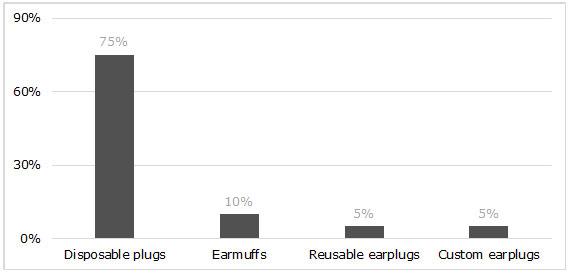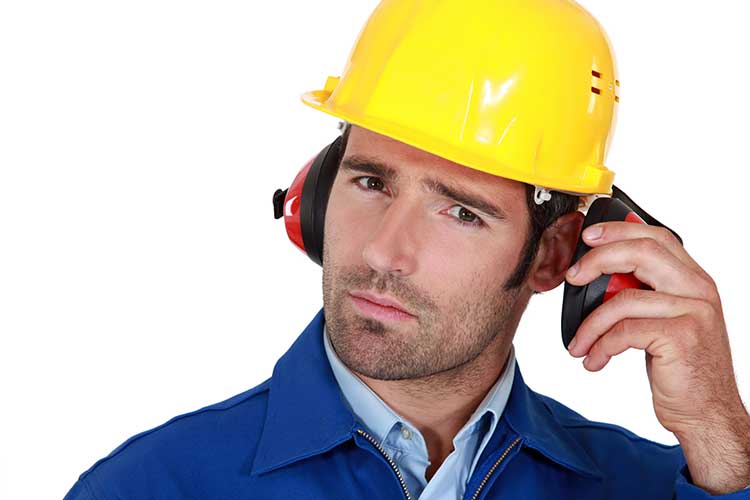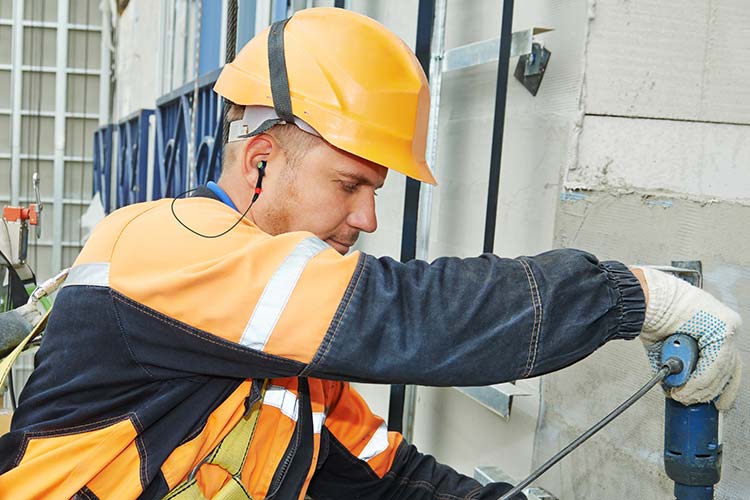Despite the rise of the safety culture and legal obligations, cases of hearing loss and occupational deafness are increasing. What exactly is the situation?
SUMMARY
- Hearing loss and deafness are increasing despite noise prevention campaigns
- Are disposable earplugs effective?
- Are hearing protectors properly fitted?
- The custom hearing protector stands out as the ideal solution
- Conclusion: Custom hearing protectors are increasingly replacing disposable earplugs
Hearing loss and deafness are increasing despite noise prevention campaigns
Since 1950, driven by national legislation (WHS Regulations in Australia, OSHA 29 CFR in USA, Decree 2006/892 in France, DGUV in Germany, and so on), noisy businesses of all sizes have implemented their own employee hearing conservation programs.
Hearing protectors are a vital part of any hearing conservation program.
Direct consequences:
- The safety culture of "protect your ears" continues to grow. Hearing protectors enter the noisy business world.
- The market of earplug manufacturers is consolidated around the two global leaders: 3M (Ear™, Aearo™, Peltor™) and Honeywell (Howard Leight™, Bilsom™).
However, rates of hearing loss and occupational deafness keep growing!
Between July 2002 and June 2007 in Australia, about 16 500 workers successfully claim compensation for industrial deafness involving permanent impairment due to noise.
Are disposable earplugs effective?
To be effective, a hearing protector should be adapted to each employee’s ears and working environment, and be compliant with its certification.

Internal Cotral Study
Is the chosen ear protection appropriate to each employee?
For many companies, the noise level and its impact are long-term problems, far in the future: hearing loss and even occupational deafness often only occur after five, fifteen, or even thirty years of exposure.
Therefore, 75% of hearing protectors (Internal Cotral Study) are usually disposable earplugs, which are often chosen indiscriminately, and without the involvement of employees. Employees are then required to wear these protectors, even though they aren't adapted to their environment or their ear shape.
Is the hearing protector really compliant?
Scientific studies conducted by certification laboratories and hearing protection manufacturers have analysed the imperfections of hearing protections. Scientist Eliot Berger of 3M has carried out the greatest number of studies of the effectiveness and limits of individual hearing protectors.
Any hearing protector, if compliant with its certification and suited to the user and his or her environment, is effective if it's worn for 100% of the time he or she is exposed to noise... This applies to earmuffs, disposable and reusable earplugs, molded or custom earplugs.
However:
- despite still more restrictive legislation
- despite the efforts of noisy businesses to raise awareness
- despite the efforts of manufacturers of disposable earplugs and earmuffs to deliver even more effective products
- and despite the efforts of people exposed to over 80 decibels to wear their protectors ...
...the results are not good... Hearing loss and occupational deafness continue to grow all over the world!
Are hearing protectors properly fitted?
To be effective, hearing protection must be worn 100% of the time an employee is exposed to noise.
Even though wearing a protector for six hours out of eight hours of exposure is better than wearing it for three or four, the only way to truly preserve your hearing health is to wear it constantly, for the entire eight hours.
Failing to do so can advance the onset of hearing fatigue by 5 to 30 years, and cause occupational deafness.
In addition, the minute a worker is first exposed without effective hearing protection, he or she is affected, and may become aggravated, stressed, and tired because of the noise, and therefore at greater risk of accidents.
Sleep problems and a possible increase in blood pressure will disrupt his or her body and its systems.

Why is hearing protection not worn 100% of the time spent in a noisy environment?
Five typical reasons for poor compliance:
- A lack of knowledge about noise and its effects
- A lack of awareness of "noise-related risk" on the part of all stakeholders
- Hearing protectors that are not fitted to the employee and the environment
- A lack of monitoring to verify hearing protector effectiveness
- Ineffective short-term strategic choices (such as cost) to protect each employee's health against the long-term risk of occupational deafness.
And yet, regardless of the price of the protector (3 cents, $1, or $200), if it is not worn 100% of the time a worker is exposed to noise, the cost – hearing loss – is too high.
Unfortunately, everyone thinks they are doing well:
- The company, when the employees wear disposable earplugs, no matter the brand
- The employee, who only uses disposable earplugs when the environment is too loud
- Manufacturers of classic types of protection, when they invest in effectiveness tests, in communication around the establishment of good practices, and in the choice of the most suitable protector
The custom hearing protector stands out as the ideal solution
For many years, studies have highlighted the problems of disposable earplugs: lack of comfort, difficult to insert, too much attenuation, etc. In response, manufacturers of custom hearing protectors appeared in the early 1980s, mainly in Europe (Netherlands, Switzerland, and France). Their goal: improve comfort and resolve the inability to communicate that came with classic protectors.
It was a success, and custom earplugs were adopted. Thousands of European companies switched from disposable to custom earplugs.
By 2015, custom-made hearing protectors were protecting the hearing of:
- 40% of employees exposed to noise in the Netherlands
- 20% of employees exposed to noise in France
- Nearly 10% of employees exposed to noise in Germany
- Less than 1% of the employees exposed to noise in the USA, Australia, Brazil, and China
The growing trend among businesses around the world toward buying custom hearing protection for each employee is poised to change the lives of workers exposed to noise. Today, the opportunity increases with newer, more sophisticated hearing protectors of more accurate computerised fabrication, and service benefits to ensure they are worn 100% of the time of exposure to noise.

Conclusion: Custom hearing protectors are increasingly replacing disposable earplugs
Performance, cost-effectiveness, comfort, and communication... If you try custom earplugs, you will never go back!
With the increased uptake of custom protection, more companies and their employees will become aware of the noise-related risk, and the hearing health of more employees will be preserved, with less and less occupational deafness.
"Protect, educate, and validate" are the components of Cotral Lab's solution to hearing loss. Cotral Lab offers full assistance in setting up an effective hearing protection solution: hearing protectors that are matched to the exact environmental noise levels, and other benefits that ensure that they are worn 100% of the time that a person is exposed to noise.
Failing to do so can advance the onset of hearing loss by 5 to 30 years, and cause occupational deafness.
